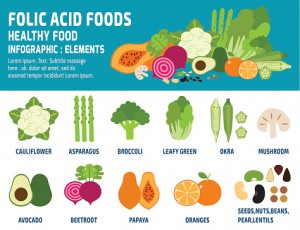How to Find Vegetables with the Best Glycemic Index Values
The glycemic index (GI) is a really handy tool for anyone who is concerned about his or her blood sugar levels. The way that glycemic index values work is as follows: since foods have differing compositions, they are broken down by the digestive system at different speeds. Once the digestive system breaks down a given food, it is turned into glucose and hits the blood stream. In general, its best to avoid foods that are high on the Index as those foods can cause fluctuations in blood sugar levels. This means you can experience the dreaded "sugar rush" and the accompanying fall in energy.
There can be serious medical consequences in allowing your blood sugar levels to get "out of whack." This is a point almost any diabetic already realizes. Thus, keeping an eye on the glycemic index values of foods is a good idea for anyone looking to avoid the highs and lows of high GI foods.
We've all heard that fruits and vegetables are good for us. After all, fruits and vegetables are loaded down with lots of vitamins, minerals and important antioxidants that fight off a wide variety of diseases, including cancer. Everyone's diet should be filled with these foods. Luckily, most fruits and vegetables are low in glycemic index values and are thus ripe for the taking.
Luckily, there are lots of veggies that have low index values. They just so happen to be very healthy picks as well. Spinach, for example, is a nutritional giant and is packed with an assortment of minerals, vitamins and antioxidants. Spinach is high in Vitamin A, C, K and E and has plenty of iron as well. For those on a diet, spinach is truly a winner. Not only is this impressive vegetable low in glycemic index values , it is also low in calories, low in fat and, of course, very high in nutrition as well.
Another healthy choice that is also low in index values is the humble Brussels sprout. This little sprout, which resembles a mini-cabbage, has a lot to offer anyone who is looking for a low GI meal. While many people may not be a big fan of Brussels sprouts, they are clearly one of the best foods that one can eat. Brussels sprouts are very high in Vitamin C, and also contain a wide variety of B vitamins, Vitamin E, numerous minerals such as magnesium, and of course, low glycemic index values. All of this nutritional goodness is combined with the fact that Brussels sprouts are rich in antioxidants and are considered a cancer preventative food.
The vegetable world is full of options with low glycemic index values that are highly nutritious and contain a wide spectrum of additional benefits. By simply eating a nutrient dense spinach salad, for example, one is taking a big step towards a low GI diet and a far healthier diet as well. By just incorporating these two nutritional giants into a few meals a week, you can take advantage of the benefits of low glycemic index values .
-
How To Lose Weight - Handy Basic Tips To Get Started
How to lose weight - the basics start here. Try to drink plenty of wat
-
Nutritionists Reveal The Biggest Weight Loss Mistakes You May Be Making
Losing weight can feel l
-
Weight Loss Diets that Work Fast - Facts You Ought to Know
There are so many diets offered to all aspiring weight losers out t
-
Is The Zone Diet Weight Loss Program Healthy?
Most of us have heard of Atkins diet which calls for almost a complet
-
Fat Burning Exercise FAQs
Q. What is fat burning exercise? A. You have ultimately made the de
-
How to Lose Weight Fast for Kids
Today, in movies and TV shows you will get to see thin kids. However,
- DON'T MISS
- The Final Phase Fat Loss Program - An In Depth Look
- The Low Glycemic Index Diet And Its Benefits For Diabetics
- 7,389,432 Weight Loss Tips Guaranteed To Help You Lose Weight!
- The Couch Potato Experience
- Detox Pre-Cleanse in 7 Steps
- Meal Replacements Promote Weight Loss When Supervised
- Diet Cookies - Details You Should Know
- Lose 10 Pounds In 7 Days – 3 Quick Tips
- What is BMI and Why You Should Understand It
- Great Ideas For Rewarding Yourself For Weight Loss




